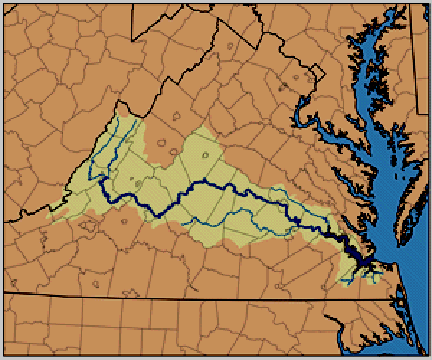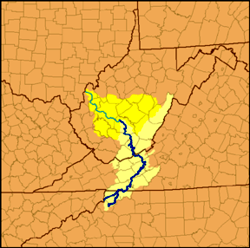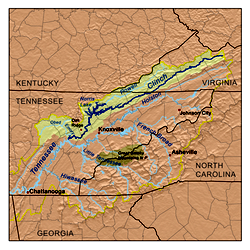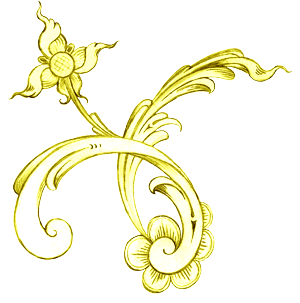|
What distinguishes a “Virginia rifle” from any other
American made rifle from the same period?
Although we see the term “Virginia rifle” used widely by
modern rifle builders and dealers, there is no single or
even group of details that would define a style of rifle
that spans so many different “schools” or regional
styles. In parts of Virginia, just like in Pennsylvania,
Maryland, and the Carolinas, rifles were an important
part of the material culture. Rifles were often locally
made and this lead to the evolution of regional styles
that can sometimes be attributed to an area, a county, a
town, or even a particular shop. This regionalism is not
unique to rifles. Experts can identify local styles in
nearly all hand crafted objects from furniture, to
quilts, to pottery.
Regional styles in firearms are not limited to America
either. Not too many years ago all Germanic rifles were
lumped together by the average longrifle collector or
builder as simply “Jaegers.” Now we know that there are
many different regional styles there as well.
If
we took the simple way out and just said that all rifles
made in Virginia were “Virginia rifles” that would cover
a huge geographical area. Unlike Pennsylvania, Maryland,
and most of New England, whose western boundaries were
established by their colonial charters, Virginia
extended westward to include the territory that later
became Kentucky, Ohio, Indiana, Illinois, etc. (In the
early 17th century the English claimed its
boundary went west to the Pacific Ocean.) Until the
Civil War it also included what is now West Virginia.
Evolution of the Counties of Virginia 1617-1995
(link to RootsWeb interactive maps--click on year to
change map)
What did a rifle made in Virginia prior to 1750 look
like?
The
question about what a pre-1750 longrifle might look like
goes WAY beyond Virginia. Documented American rifles
made anywhere before 1760 are scarce and, if you toss
out the ones with questionable documentation,
signatures, or origin, they come down basically to a few
parts found in archaeological sites, also sometimes of
questionable, European or American, origin. Based on
documents, we know that both short rifles and long
rifles existed in the colonies prior to the 1740s but
nailing down a few surviving examples would be a
wonderful breakthrough in research.
Given the lack of pre-1750 examples, what does it mean
when someone refers to a longrifle as “early?”
“Early” is another term that has different meanings
depending on the context in which it is used. An early
Tennessee rifle is very different in period from an
early Lancaster rifle. For the sake of simplicity I will
stick to how the term is generally used in reference to
the subject of Virginia made longrifles.
An
early style rifle usually means one that pre-dates the
“Golden Age” rifles but using that definition simply
replaces the first question with, “What is a Golden Age
rifle?” For the answer to that I refer you to page 31 in
the third chapter of Joe Kindig’s book Thoughts on
the Kentucky Rifle in Its Golden Age (1960).
Rifles actually made before the Revolutionary War are
certainly early, not to mention scarce, and most will
agree that the term also applies to those made during
and immediately after the war. If you agree with me on
that loose definition of the term, any rifle made prior
to ca. 1780-85 is an “early rifle.”
But
there is more to the definition of an early style rifle
than the year in which it was made. The previously
mentioned chapter in Mr. Kindig’s book addresses many of
the characteristics that define an early rifle—wide flat
butt pieces, tapered and flared barrels, etc. Chapter 20
in Volume II of George Shumway,s Rifles of Colonial
America (1980) looks more closely at the evolution
of the art on longrifles with an eye toward the shift
from baroque to rococo design elements. Both the form of
the rifle and the art on it are part of what a collector
refers to when he refers to a rifle as “early.”
For
a modern builder who aspires to produce an early rifle,
Virginia or otherwise, there is one simple rule for
dating objects to keep in mind: no rifle can be earlier
than the latest detail of its construction or
decoration. Examples— since “German silver” (a man made
nickel-brass alloy) did not come into use until the end
of the first quarter of the 19th century, a
rifle with German silver mounts or inlays could not
considered a historically correct 18th-century
rifle. Likewise a Federal Eagle on an inlay or patch box
dates the rifle to the mid-1780s or later. Those
examples are simple and obvious. Learning to tell the
difference between rococo and Neo-classical design
elements requires more study but is every bit as
important to doing historically correct work.
Since Williamsburg was the capital of Virginia during
much of the colonial period, what was a rifle made there
like?
On
the question of Williamsburg rifles of the 18th
century the answer is simple: there are no know
examples. Tidewater Virginia was not really part of the
“rifle culture” that grew up west of the Blue Ridge
Mountains. A few people in eastern Virginia owned rifles
but they were probably imported from England or brought
there from other regions.
In
Williamsburg, there are some unfinished parts from the
Geddy site that lets us know they were probably making
pistols and fowlers. (The blank sideplate casting
pattern they excavated could have been for a rifle.)
There is documentation that the Geddy brothers were
offering to rifle barrels in 1751 but that is a service
and doesn’t prove they made new rifles.
The
only known surviving civilian firearm signed by a
Williamsburg gunsmith is a screw barrel pistol by John
Brush. Brush came to Williamsburg in 1717 and died in
1726. The estate of Henry Bowcock, who died a few miles
from Williamsburg in 1729, included “1 bird piece made
by Brush.” That lets us know he also made fowlers. [See:
The Gunsmith in Colonial Virginia by Harold B.
Gill, Jr. 1974]
During the time when I was the Master of the Colonial
Williamsburg Gunsmith Shop we made longrifles that
represented those from towns many miles to the west and
north—along the Great Wagon Road. When called on to
produce something that might have been made in Tidewater
Virginia we drew on details from English rifles or work
believed to be from near Fredericksburg at the fall line
of the Rappahannock River.
What is the difference between a “Valley rifle” and a
“Shenandoah Valley rifle?”
The
terms “Shenandoah Valley” and “Valley of Virginia” can
be confusing because they may be used interchangeably
for the entire valley between the Blue Ridge Mountains
on the east and the Appalachian Mountains on the west.
(See the map below drawn by Karl Musser and displayed on
Wikipedia.) If you drive south down the path of the
Great Wagon Road, along modern Rt.11 and/or I-81, from
Maryland past Winchester toward the Roanoke area you are
in one continuous valley defined by those two mountain
ranges. That large geographic region is all called the
“Valley of Virginia” but only the large northern part of
the Valley, from just south of Staunton, is actually
drained by the Shenandoah’s branches which flow north.

A
rifle made in Staunton by John Sheetz is technically a
Shenandoah Valley rifle but one made by John Davidson in
Rockbridge County is a Valley rifle or, more
specifically, a James River Basin rifle.
What does it mean when a collector attributes an antique
rifle to the “James River basin” area?
To
a geologist or geographer the entire James River
drainage can be called the James River basin. When
collectors talk about rifle making in the James River
“basin” they are referring to the south-central part of
the Valley of Virginia where the streams drain east into
the James River rather than north into the Shenandoah
River. At the “Forks of the James” the many branches of
the upper James come together and pass through a gap in
the Blue Ridge Mountains near Glasgow, south of
Lexington.

Where do so called Southwest Virginia rifles fit in the
picture?
The
crest of the Appalachian Mountain Range forms the
eastern continental divide between waters flowing
eastward into the Atlantic and those flowing down the
Mississippi into the Gulf of Mexico. (In the Kings
proclamation of 1763 he called the latter the “westward
waters” and banned settlement there.) Major eastward
flowing waters in Virginia’s rifle making country
include the Potomac, Shenandoah, James, and Roanoke
Rivers. Between Roanoke and Blacksburg is the divide
where waters in present day Virginia flow west, either
by way of the New River drainage into the Ohio or, even
farther west, down the Holston, Clinch and Powell Rivers
into Tennessee.


In
common usage the parts of Virginia beyond the
continental divide are known as “Southwest Virginia.”
The definition is far from exact and Roanoke County,
which is east of the break, is often referred to as
being in SW Virginia.
The
rifles made in those Southwest Virginia counties include
a number of distinct regional styles. So, just like the
term “Valley rifles,” there is no set of details common
to them all. That said, modern builders and collectors
generally point out that iron mounts are more common on
rifles from this western area than on rifles made in
other parts of Virginia. True, however the answer is not
that simple. There are surviving iron mounted rifles
made from Staunton southward and brass mounted rifles
made well beyond the divide.
The
late flint and percussion rifles made in far SW Virginia
often closely resemble those made in North Carolina and
Tennessee. There is still research to be done to more
clearly define those regional styles within the “over
the mountain” regions and state lines may have much less
to do with the results than mountain ridges and river
valleys.
(top) |
